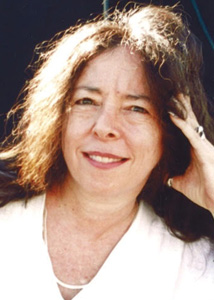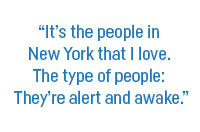 Documentary filmmaker Karen Kramer’s works include “The Jolo Serpent Handlers”, “Rice and Peas”, “Coney Island Mermaid”, “Children of Shadows”, and “The Ballad of Greenwich Village”. Westchester-raised Kramer received her B.F.A. in film from NYU’s Tisch School of the Arts. In addition to her film work, she is a freelance writer whose articles have appeared in multiple publications.
Documentary filmmaker Karen Kramer’s works include “The Jolo Serpent Handlers”, “Rice and Peas”, “Coney Island Mermaid”, “Children of Shadows”, and “The Ballad of Greenwich Village”. Westchester-raised Kramer received her B.F.A. in film from NYU’s Tisch School of the Arts. In addition to her film work, she is a freelance writer whose articles have appeared in multiple publications.
When documentary filmmaker Karen Kramer was in high school, she announced to her parents that she wasn’t going to college. Instead, “hitchhiking around and having adventures” was what she planned to do. “Needless to say, that didn’t go over too well with them,” Kramer says, laughing. “So, I compromised and chose a university in Denver. It didn’t seem tame like the suburbs where I grew up. I only lasted a year at school out there, though, and when I decided to settle down, I chose the one place on the planet that represented freedom to me. That place, of course, was Greenwich Village.”
Kramer made the move here and attended NYU as a film major, eventually discovering that documentary films suited her best. “I had first wanted to be a writer,” she says. “But I soon realized I wanted something bigger than writing. Film was a better medium for communicating my interest in other cultures and I started leaning toward documentaries. I had always been influenced by the work of Maya Deren, Storm de Hirsch, and Chick Strand and the more I studied, the more I knew I didn’t want to do fiction films.”
Her first documentary came about when a fellow film student asked her to travel to West Virginia to introduce his high school students to experimental films. “I agreed, but my one demand was that he take me to a snake-handling church while there,” Kramer says. “I was very interested in ecstatic religion and rituals and had an idea to do films about that. I got to West Virginia with my windup Bolex and I filmed snake handlers, turning it into a 40-minute documentary called ‘The Jolo Serpent Handlers.’ After that I was on my way to making films about cultures I found fascinating.” Forty years and thirteen films later, Kramer still gets satisfaction from compliments about her sensitivity to the people that she films. “I think it’s great that people recognize it because I work very hard at that,” she says. “For instance, it would have been easy to make the Jolo serpent handlers look bad. Instead, I showed them at their best and let them speak in their own words. I think that’s the secret to a good documentary.”
Kramer’s latest film—still in post-production—is called “Renegade Dreamers.” It began from her fascination with the legendary Village coffee houses like the Gaslight and Figaro when there was an explosion of music and poetry that reverberated around the world. “I was curious to see if there were any people today following in those traditions,” she says. “And I actually came across some wonderful radical songwriters and spoken-word artists who are on fire and using their own words today in the same way that people like Dylan and Ginsberg did back then. The film cuts back and forth between the past and the present and even though it’s the older generation that gives it weight, it’s the younger generation that gives it that arc.”
 Having lived on Leroy Street for decades, Kramer claims it’s been a joyful experience. “Oh my God! It’s a fantastic little street,” she enthuses. “I have to say—without sounding corny—that I feel so grateful that I moved into this part of the Village when I did and experienced part of the old Italian flavor. You still had Borgia coffee house, you still had shops like Zito’s Bread, fish stores, vegetable stores, and shops full of things that people really needed. I know that in some way it has formed a piece of me.”
Having lived on Leroy Street for decades, Kramer claims it’s been a joyful experience. “Oh my God! It’s a fantastic little street,” she enthuses. “I have to say—without sounding corny—that I feel so grateful that I moved into this part of the Village when I did and experienced part of the old Italian flavor. You still had Borgia coffee house, you still had shops like Zito’s Bread, fish stores, vegetable stores, and shops full of things that people really needed. I know that in some way it has formed a piece of me.”
“I feel really lucky to be here,” she continues. “Every time I think about leaving the Village and living elsewhere, I realize that even with all its problems, the Village is much better than anywhere else. It’s the people in New York that I love. The type of people: they’re alert and awake. These days a lot of us are saying, ‘This isn’t the New York I used to know.’ But still we don’t leave. Perhaps that’s because we really want to be here after all.”
Photo: Jessie Gladdek
